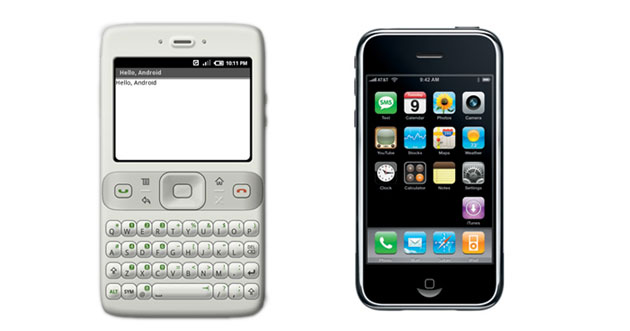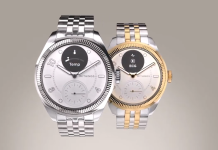
In the early days of Android, Google was only considering a traditional keyboard interface (like that shown above), and the advent of a touch-screen interface came much later with the release of the first iPhone.
As part of the continued hearing in the US Supreme Court between Apple and Samsung, Google’s Android engineering VP Hiroshi Lockheimer was placed on the stand and gave evidence about the early days of Android. He explained that as of 2006, the Android open platform only considered the use of a physical keyboard as part of the OS operation and hardware requirements.
Lockheimer’s documents were destined for potential hardware makers, to show them where Android was headed. Android, at the time based on Linux Kernel 2.6, didn’t actually have support for touchscreens.
In its 2006 specification for Android devices, Google stated:
Touchscreens will not be supported. […] The product was designed with the presence of discrete physical buttons as an assumption. However, there is nothing fundamental in the products architecture that prevents the support of touchscreens in the future.
Other interesting tidbits from the documents include the plans to use Microsoft’s FAT 32 file system. Fortunately that didn’t eventuate, as we know that Microsoft has since been asking device makers for licensing fees for using that technology.
Android still features some of the things developed in the very early days, including support for widgets, removable storage, third party applications, notifications and of course integration with Google services. It’s worth remember that at the time, Apple’s iPhone supported precisely none of these features — it’s only with more recent updates that some of these features are now supported. Removable storage and widgets are still absent, and probably will stay that way.
You can read the full original Android Project Software Functional Requirements below:
What do you think about Android being originally based on a physical keyboard device compared to an all touchscreen device? Is Android better based on a touchscreen or would you like to see such a device? We would like to here your thoughts below.




